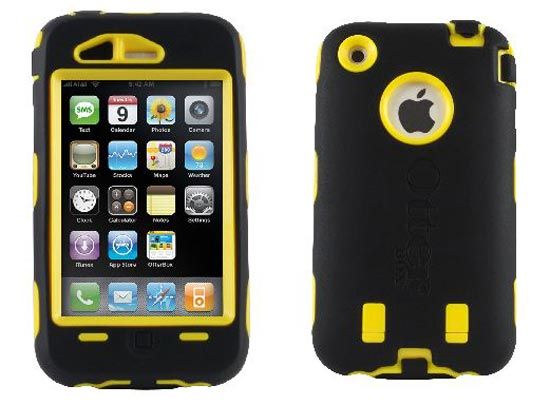
One of the most common contractor objections to Apple’s iPhone, or any smart phone, is its durability. Less of an issue for the white collar world, contractors need a phone that holds up to bumps, scrapes, CMU blocks and 2x12s.
Any smart phone’s attractive qualities- sleek, small, agile, and lightweight – seem to be in conflict with contractor durability requirements to take a licking and keep on ticking. So there exists a market opportunity for durable, even contractor specific, smart phone products.
Enter Otterbox, a company that makes high impact protective skins for smart phones. Its Defender Series is the toughest case on the market, with a proprietary three layer design that keeps nearly every millimeter of the phone protected.
Only the microphone, speaker and receiver are left exposed so all those jacks and docks, which are prone to being filled with construction debris, are protected. The screen, volume controls, home button, headset jack, sleep/wake button, camera and dock connector all have fixed protective coating or operable flaps.
The shell, most unique and useful against inevitable drops, is secured by a high-impact polycarbonate and impact-absorbing silicone. They also sell a clip, so contractors have the option of wearing the phone on their belt.
Otterbox started in 1998, building waterproof cases (an otter’s fur is waterproof). They’ve since diversified into durability cases, a wider market, and built their brand into the best in class. There are loads of jaw dropping YouTube videos testing the case’s durability, including what you would think is a suicidal 23-story drop onto concrete: https://www.youtube.com/watch?v=SSaywLJdtVQ . I bought my case immediately after watching that video.
My personal experience with phone destruction was rather odd. On the job site I had damaged a couple of headsets under the strain of tools, shovels and wheelbarrows. But the phone itself had always held up pretty well, because I would keep it protected in my pocket while the headset was exposed to all of the work hazards.
It was actually my son, accidently tripping and throwing the phone across the room, who broke the display, a commonly fixed problem at the Apple store.
The hassle of repair got me pondering ways to avoid the breakage in the future. The phone is, after all, a $700 computer, worthy of some physical insurance. The Apple representative recommended the Otterbox case, which she said was perfect for those in construction.
There is not much negative to say about the Defender Case. It is a bit bulky, but not overwhelmingly so. I had thought that all of the silicone flaps covering the jacks would be irritating, but found them simple to operate.
In short, the Otterbox Defender Case is a reliable tool for keeping valuable assets protected. Now, if only I could say the same thing for my 5-year old son.
Fine Homebuilding Recommended Products
Fine Homebuilding receives a commission for items purchased through links on this site, including Amazon Associates and other affiliate advertising programs.

Reliable Crimp Connectors

8067 All-Weather Flashing Tape

Affordable IR Camera


























View Comments
I am on my second iPhone and my second Defender case. I definitely recommend the Otterbox case if you own an iPhone and work in dusty, harsh environments. My first iPhone 3G lasted 2 years before I sold it ($195 via eBay) and upgraded to the iPhone4. I fully expect this phone to last the life of the contract and be in good enough shape to sell for top dollar at the end of the contract. All thanks to the Defender case.
The case shown here is not for the current iPhone model though. The newer case does provide slightly less protection from dust which is something to keep in mind. If I'm working with MDF or other material which produces fine dust particles, I will keep the phone in my pocket and not holstered.
As a one-man show remodeler, I'm an avid iphone user. It's an office in my pocket. I've tried the Otterbox case and similar bulky solutions. In my case, it's much safer for the phone to be in my pocket, but the problem with these "contractor-grade" solutions is that the outer cover isn't smooth, and makes retrieving it from my pocket difficult. The more I sweat, the worse it gets. Consequently, I use a much less technical case with a smooth back and half the bulk. When I place it in my front pocket, the smooth back faces toward the outside--cinder blocks, sharp bags of lathe and plaster, and tool belts don't bother it.